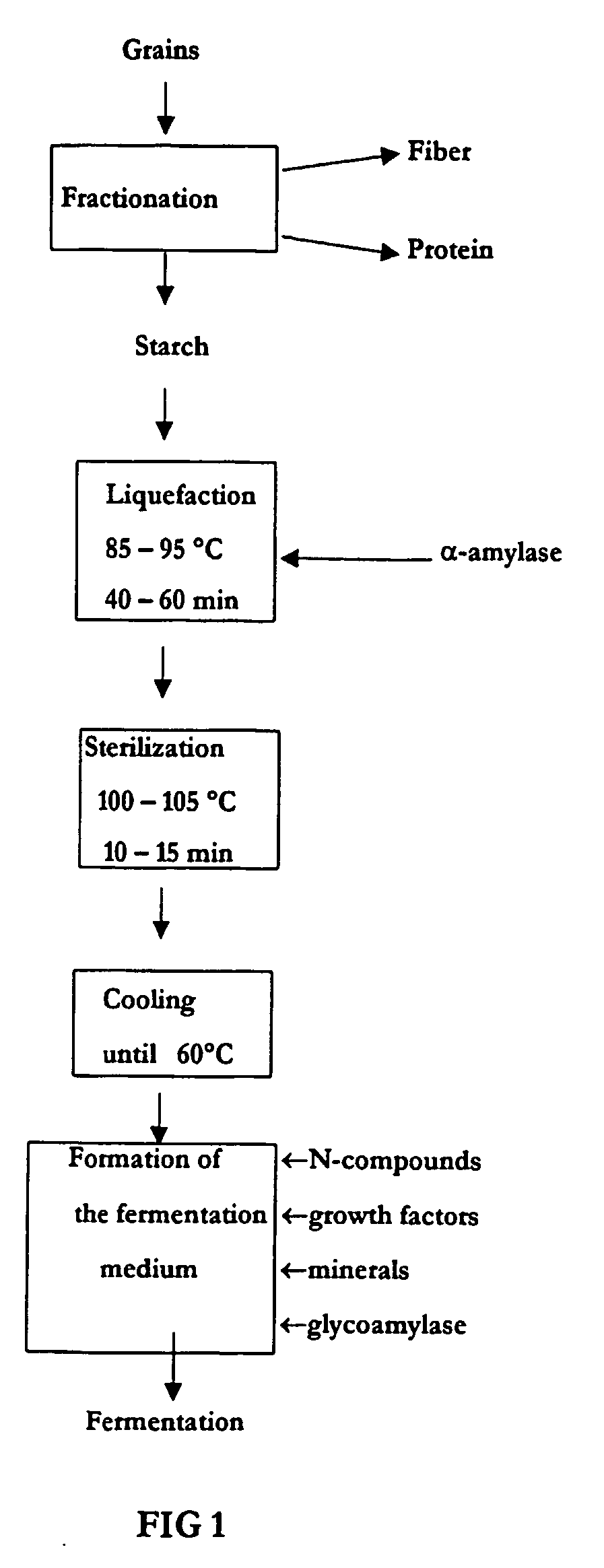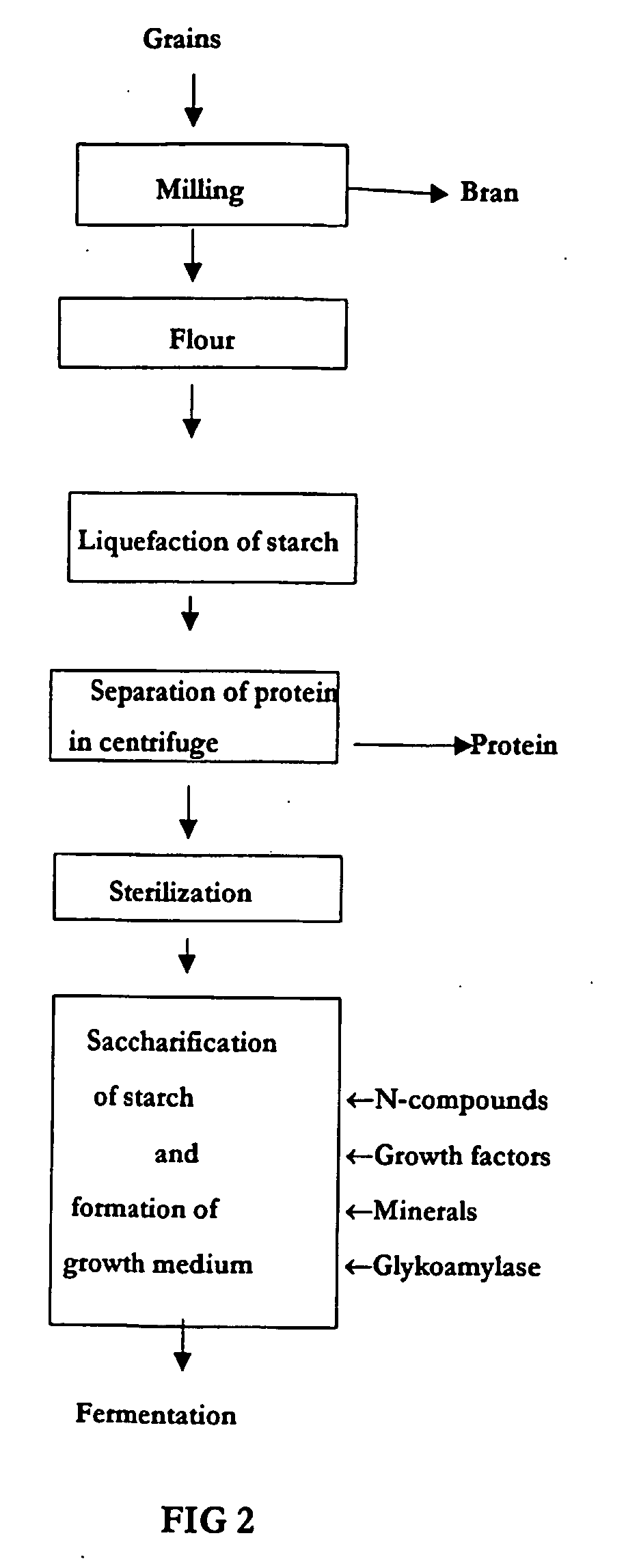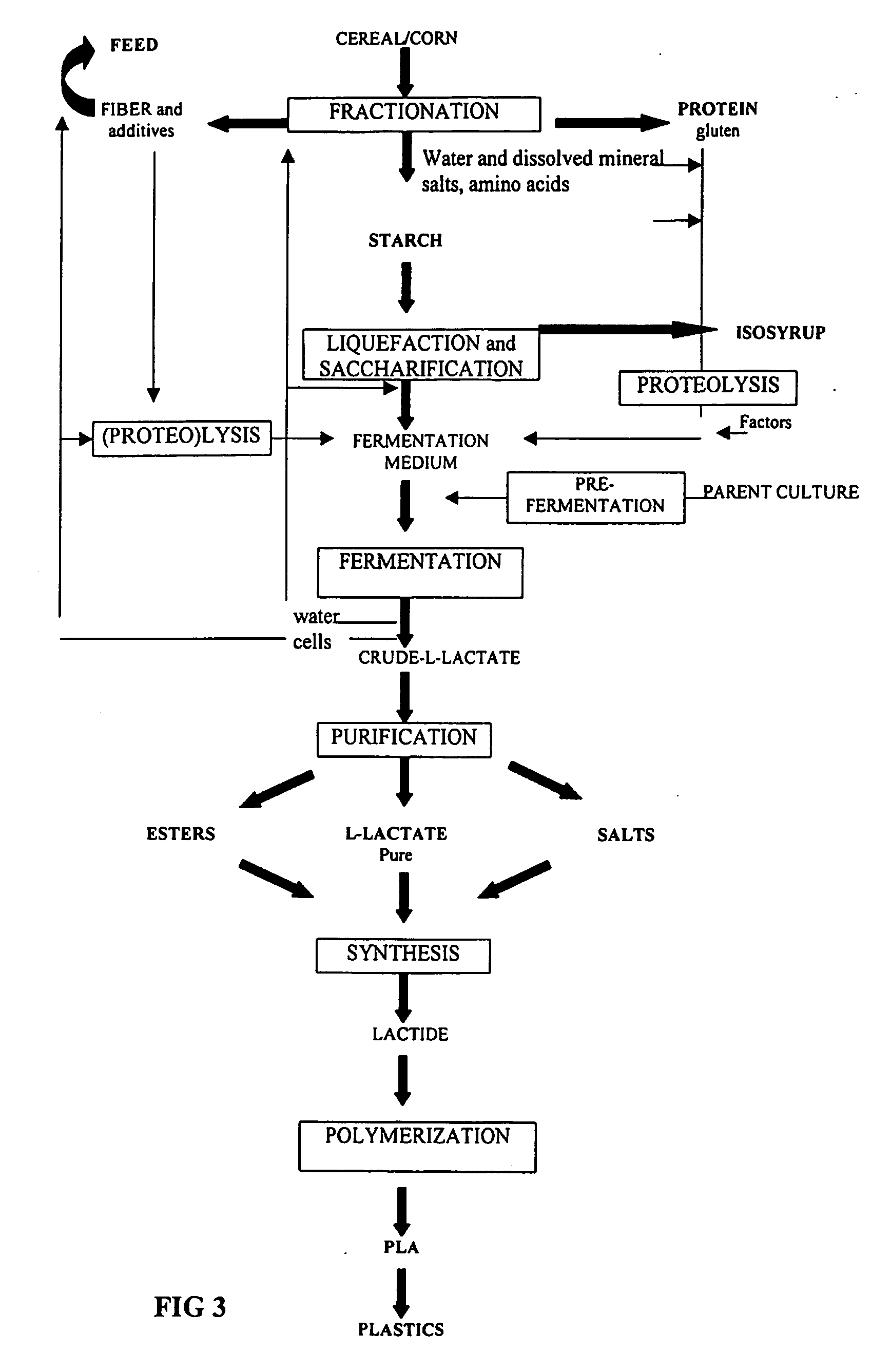Method of production of biodegradable lactic acid polymers and the use of lactic acid polymers produced using such a method
a technology of lactic acid polymer and biodegradable lactic acid, which is applied in the field of biodegradable lactic acid polymer production and the use of lactic acid polymers produced using such a method, can solve the problems of high molecular weight polylactic acid thermodynamically unstable, depolymerisation, and the lik
- Summary
- Abstract
- Description
- Claims
- Application Information
AI Technical Summary
Benefits of technology
Problems solved by technology
Method used
Image
Examples
example 1
[0049] Wheat flour was suspended respectively in distilled water and in the water released upon concentration of the fermentation medium (the distillate of the medium used for homofermentative fermentation of lactic acid with Bacillus coagulans). The suspensions were allowed to sediment, which resulted in clearly recognisable gluten zone (upper) and fractions of starch and fibers. In two series of experiments, microscopic analysis of the fractions did not indicate any differences.
example 2
Fermentative Hydrolysis of Starch in the Environment of the Water Utilized for Fractionation of Cereal.
[0050] The water utilized for fractionation was considered to be the water which was derived from suspending cereal (wheat) flour in water for 20 minutes and from which fiber, starch grains and protein particles were separated by centrifugation at 2,000 g for 15 minutes. Utilising said water, suspension of starch was prepared, the full hydrolysis of which would yield an 800 mM aqueous solution of glucose. Distilled water was used as a control solution. Starch (200 g) was liquefied with industrial enzyme alpha-amylase (Nervanase BT) and saccharinized with glucoamylase (Rakvere Distillery, Estonia). To liquefy starch with alpha-amylase, the temperature was increased to 80° C. in 40 minutes and incubated at this temperature for 10 minutes. Independent of the utilized water, a liquefied dextrose aqueous solution with DE=17-20 was derived. The liquefied starch solution was then cooled...
example 3
Fermentative Hydrolysis of Gluten in the Water Used for Fractionation of Cereal
[0051] The water utilized for fractionation was considered to be the water which was derived from suspending cereal (wheat) flour in water for 20 minutes and from which fiber, starch grains and protein particles were separated by centrifugation at 2,000 g for 15 minutes. Then, a 12-percent aqueous solution of gluten was prepared using fractionation water or distilled water for that purpose. In both cases, the pH was adjusted to 6 and the suspension incubated at 47° C. For hydrolysis of gluten, an industrial protease complex ‘Flavourzyme’ (NovoNordisk, Denmark) was used at 50 units per gram of protein. Independent of the utilized water, 33% of the possible theoretical yield (determined by ninhydrin) was released as free amino acids after 30 minutes of exposition. Qualitative analysis of amino acids using thin layer chromatography did not indicate any differences in the amino acid composition of the lysat...
PUM
| Property | Measurement | Unit |
|---|---|---|
| temperature | aaaaa | aaaaa |
| temperature | aaaaa | aaaaa |
| temperature | aaaaa | aaaaa |
Abstract
Description
Claims
Application Information
 Login to View More
Login to View More - R&D
- Intellectual Property
- Life Sciences
- Materials
- Tech Scout
- Unparalleled Data Quality
- Higher Quality Content
- 60% Fewer Hallucinations
Browse by: Latest US Patents, China's latest patents, Technical Efficacy Thesaurus, Application Domain, Technology Topic, Popular Technical Reports.
© 2025 PatSnap. All rights reserved.Legal|Privacy policy|Modern Slavery Act Transparency Statement|Sitemap|About US| Contact US: help@patsnap.com



